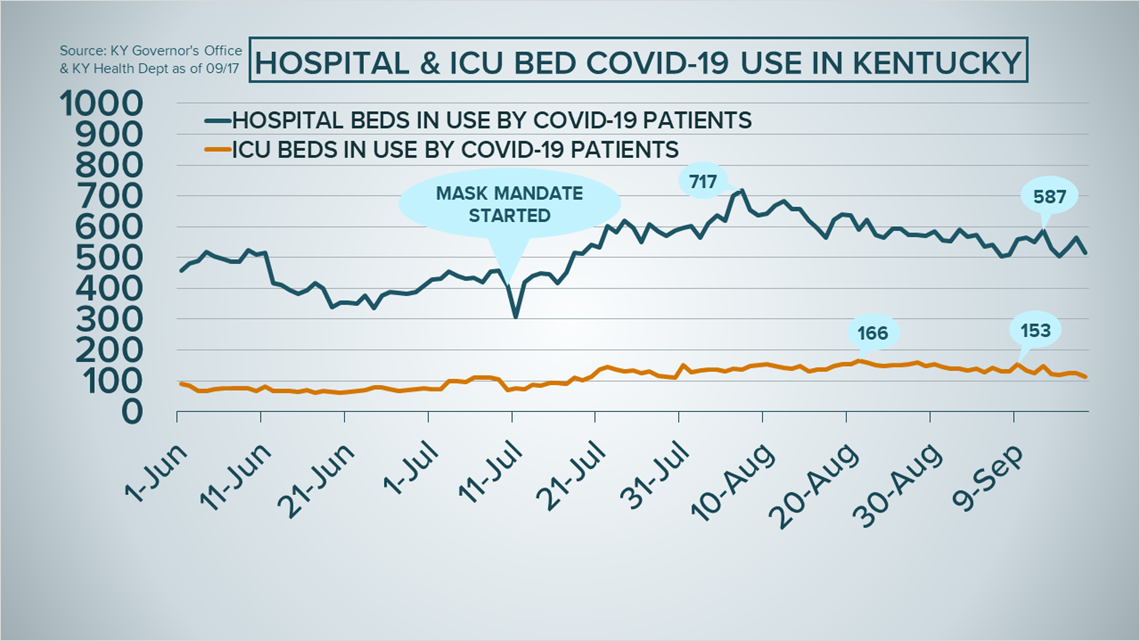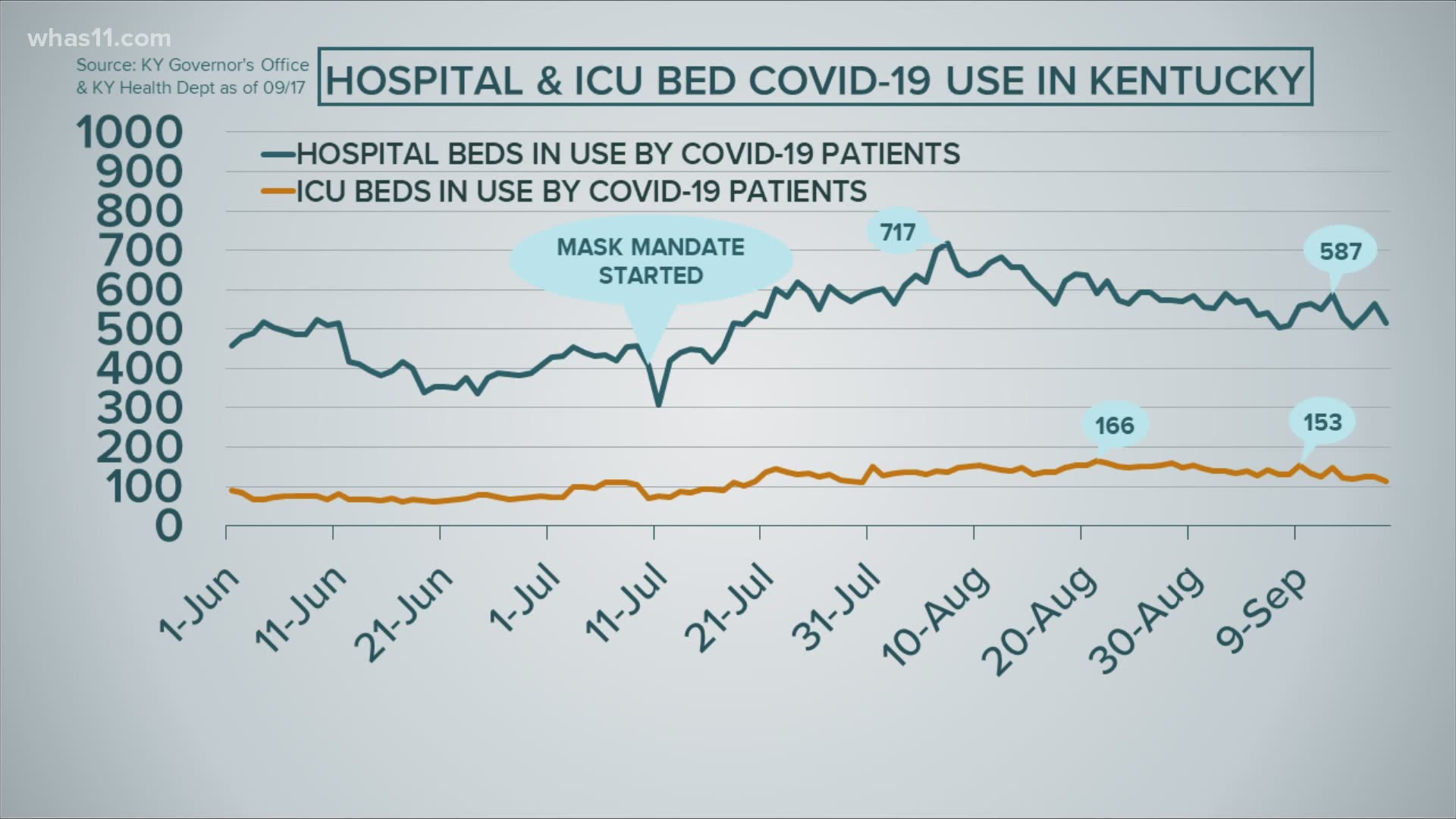LOUISVILLE, Ky. — One of the critical numbers to watch during this pandemic is the hospitalization rates. Officials aim to control the virus so that healthcare facilities do not become overwhelmed. The FOCUS team has some new graphs to break down the rates so far.
INDIANA


The blue line shows patients infected with the virus in Intensive Care or ICU beds since early April. The orange line shows patients on ventilators.
You'll see, the peaks were back in April. There were 856 patients in the ICU and 501 patients on ventilators.
Near the center, in July, patients needing care reached the lowest on record, with 213 patients in the ICU and only 62 on ventilators.
The blue line, those needing ICU treatment, has fluctuated but overall seems to be flattening out into September.
Same for the number of patients on a ventilator with patient numbers settling in the 60s and 70s on any given day.
KENTUCKY


We have access to different information in Kentucky.
In this graph, the blue line shows the total regular hospital beds in use by coronavirus patients since June 1. The orange line shows the number of patients in the ICU. We've also marked the day the mask mandate started.
The highest number of COVID-19 patients in hospitals was in early August.
On the blue line, we've added that label, 717 patients hospitalized at that time.
The good news, for the most part, that the blue line tracking COVID-19 hospitalizations continues to decline.
The highest number of patients in the ICU on record in Kentucky was in late August, with 166 ICU bed in use. That line has been more steady but on a slight decline since that high point.
Kentucky and Indiana both remain well below the healthcare system capacity, meaning there are plenty of beds open even when you factor in patients needing treatment for a non-virus related reason.
As always, we'll keep giving you the data and the context to understand how the virus is impacting our communities.
►Make it easy to keep up-to-date with more stories like this. Download the WHAS11 News app now. For Apple or Android users.
Have a news tip? Email assign@whas11.com, visit our Facebook page or Twitter feed.

